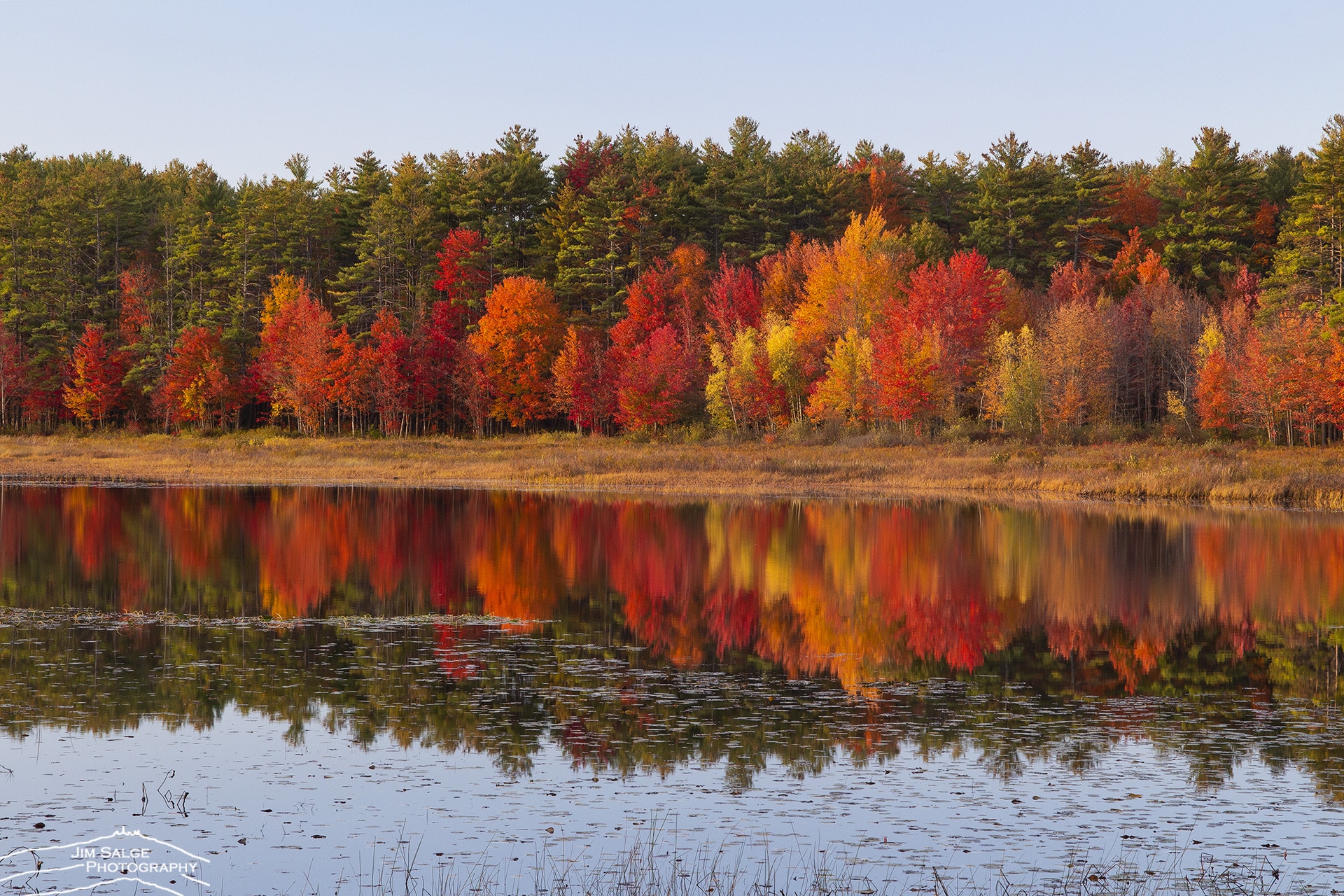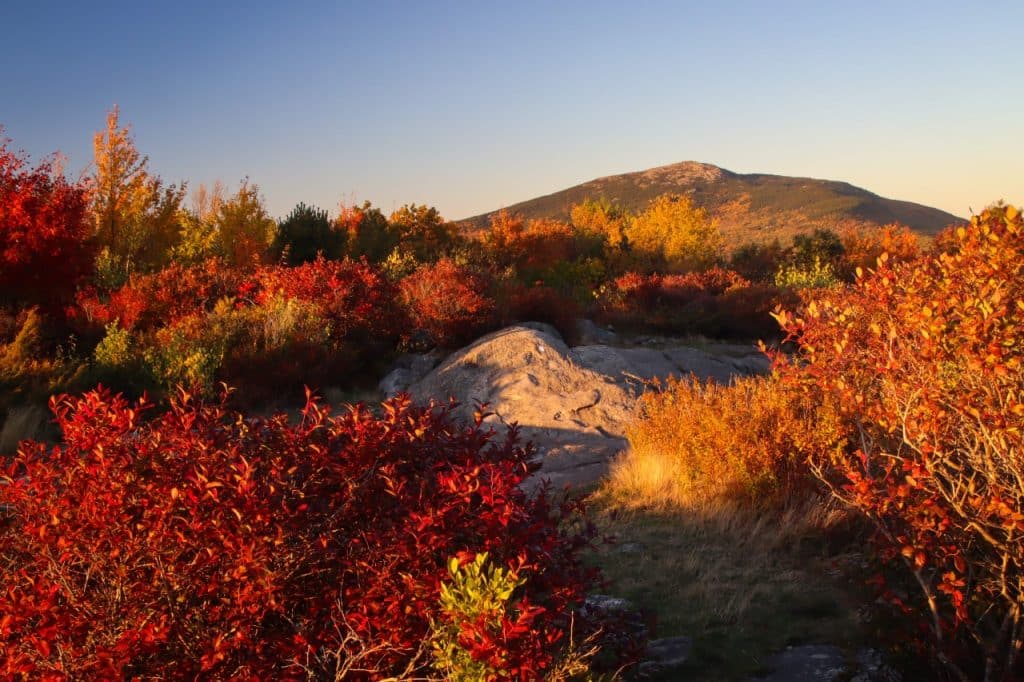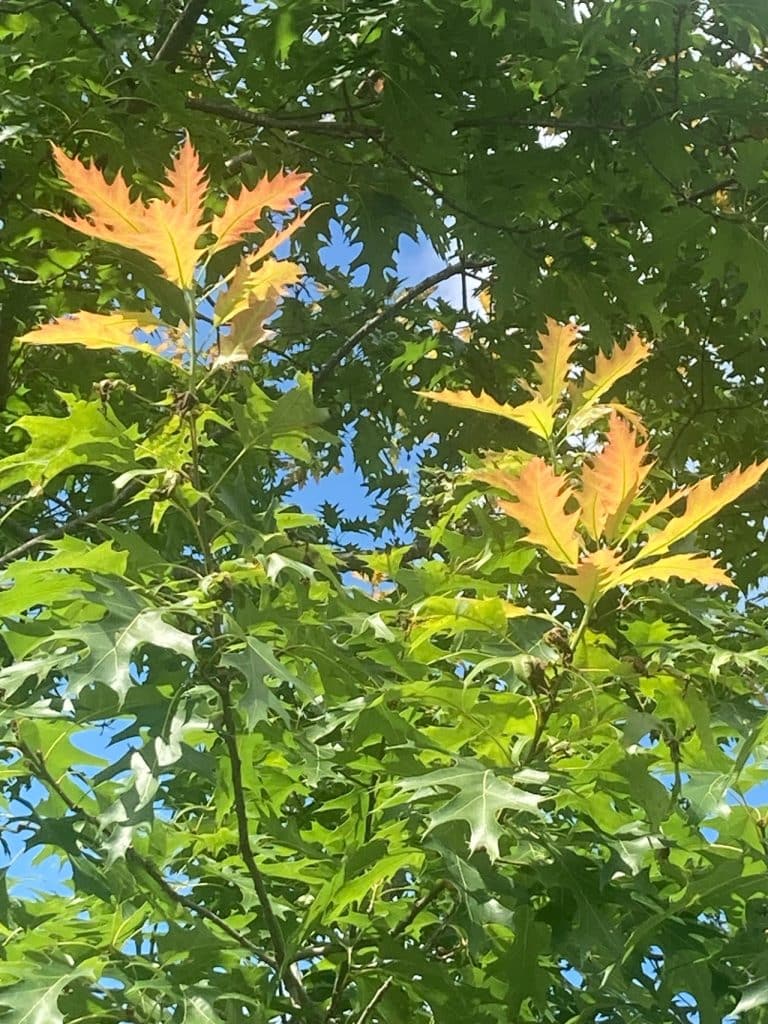New England Fall Foliage | 2023 Forecast
Ready for another New England fall foliage season? Our forecaster predicts a long season of beautiful patchwork color! Read on for the full 2023 New England fall foliage forecast.

Coffee By Design | Portland, Maine
Photo Credit : Katherine KeenanEvery year, fields of goldenrod hit their peak just as this forecast goes to press, signaling the beginning of the end of summer. The harvest is right around the corner, the big agricultural fairs are gearing up, and there’s a hint of crispness to the morning air. Soon, New England’s famed fall foliage will arrive.
In many ways, though, it feels as if we’re still waiting for summer. Incessant rain and humidity has been the talk of the region for months, causing everything from lagging gardens to historic floods. In fact, New England hasn’t seen a July this wet since the record rainfall of … 2021.
Comparing the two years should make this fall forecast easier. But although we did have great fall color in 2021, the prevailing weather patterns in 2023 are different. Also, the summer of 2022 was marked by a severe drought. All this impacts the health of the forests in New England and what we can expect for fall foliage in 2023.

While New England’s fall foliage is always beautiful, no two seasons are the same. Some are brighter, and others more muted. The color can be long-lasting or maddeningly brief, it can come early or late, and the range of hues can shift from mostly orange and yellow to overwhelmingly red. It’s a complex phenomenon that calls for analyzing many factors, which are often competing or contradictory. No doubt this year’s foliage show will be beautiful — but vacation planning across the region hangs on the details of when and how.
So, what will the 2023 New England fall foliage look like?

Photo Credit : Jim Salge
New England Fall Foliage 2023 | Influences
Weather & Climate
This year’s incredibly wet and humid summer will definitely have an effect on the fall color. But it’s also important for us to look back at the drought of last summer, as well as three subsequent high-impact days that tell much of the rest of the story: one in winter, one in spring, and one this summer.
Last year’s drought created significantly lower-quality conditions for photosynthesis among many trees in our region, so they may not have put away their typical energy reserves before going dormant in fall and winter. This was not the case for all of New England, where the far northern areas were largely spared — but that’s where the other three days come in.
The first high-impact day was February 4, 2023, when an arctic wind pushed temperatures to record lows across the region. Boston fell to double digits below zero for the first time since 1957, and New Hampshire’s Mount Washington saw a windchill of -108F, likely the all-time lowest recorded wind chill temperature in the U.S.

Photo Credit : Jim Salge
Snowpack had been slow to build before this arctic event, so many plants were left exposed to the cold, desiccating winds, and suffered damage. There wasn’t a peach to be found in northern New England this summer, and many other fruit trees were similarly stunted. Perhaps the most striking sign could be seen among spring forsythia, which bloomed only at the very bottom of the bush because that’s where snowpack had offered protection. On a more positive note: The extreme cold took a significant toll on invasive pests such as the spongy moth caterpillar and the hemlock woolly adelgid.
After a celebrated “Miracle March” for New England’s skiers and snow lovers, a warm April kickstarted spring. The early leaf-out across the region meant there was a lot of sensitive green growing by the second high-impact day: May 18, 2023. That morning, a blast of cold, dry air put much of New England into a deep freeze, setting record lows in places like Hartford, Connecticut, and Portland, Maine, and sending temperatures in the northern interior into the teens.

Photo Credit : Jim Salge
The leaves on many oak and sumac trees in northern New England were frost-nipped and shed shortly thereafter; in extreme cases, even cold-tolerant maples suffered. The affected trees put out a new round of smaller, thinner growth in late June (some people observed that the oaks looked as if they had their fall colors out, as red anthocyanin pigments worked to protect the new growth). Perhaps the biggest effect of this late freeze, though, was felt by New England’s apple orchards, with many losing a significant portion of their fall crops.
Through late spring and into early summer, New England stayed generally cooler than average. Notably, Mount Washington had the snowiest June in its nearly 100-year recorded history. And then … the rains began.
A stagnant, humid weather pattern was to blame. All the way up north, the town of Caribou, Maine, saw a new record for the most consecutive days with the dew point remaining above 60F; farther south, the streak went on for more than a month. The humid air meant conditions were ripe for rain, and it came often. Montpellier, Vermont, had its wettest July ever with over 12 inches of rain, with more than half falling within a three-day period.
The third-high impact day came on July 10, 2023, when Vermont was devastated by flooding, washouts, and landslides. The rest of northern New England and the Massachusetts Berkshires were hit hard, too. It will take a long time before some communities truly recover, but repairs and rebuilding are already well underway to welcome fall visitors in an area where tourism is critical to the livelihoods of many.
And the rain has kept coming, right up to the writing of this forecast. A daylong deluge on August 8 saw as much as seven inches of rain north of Boston, and Mount Washington has already set the mark for the wettest summer on record.

Photo Credit : Jim Salge
New England Fall Foliage 2023 | Wildlife
Bugs and Fungi
Spongy moth caterpillars (formerly known as gypsy moth) dropped in numbers this year, thanks in part to the sharp cold snap in February. They struggle to survive below -20F, and many overwintering egg masses perished. In addition, New England’s persistent rainfall boosted a fungus that serves as a biological control for the invasive insect. There were still some outbreaks, especially in the eastern White Mountains, but the leaves have regrown well. The browntail and winter moths continue to expand their invasive ranges in New England but still pose only localized concern.
The arctic cold also halted the progress of the hemlock woolly adelgid across northern New England, and long-term outlooks are not good for the species. Unfortunately, the emerald ash borer has a far lower cold tolerance.
Aside from insects, leaf fungi like anthracnose can also dampen New England’s fall display. This year, leaf-out was quick and rain was sparse early on, so we have not seen much evidence of leaf fungus growth yet. However, as the trees prepare for autumn, it could become a factor due to all the recent moisture. It’s our biggest concern, and biggest question mark, about the season.
Flowers and Seeds
Since trees need to use a significant amount of their energy to create flowers and seeds (aka mast), they don’t produce heavy crops every year. When they do, it happens with surprising synchronicity among species, which means the forest canopy can be affected region-wide (since more energy for mast means less energy for leaves). This year is turning out to be a pretty big mast year in New England — a bit surprising, given that the late frost should have killed off much of the trees’ flowering activity. Beech, maple, hickory, and even witch hazel are all having big seed crops; even some oaks are putting out a lot of acorns, depending on the species.
New England Fall Foliage 2023 | Long-Range Outlook
Even with a good setup for leaves this year, the best fall color will occur only if the weather cooperates. Bright hues are brought out by warm, sunny days and crisp, cool nights — a combination that not only accelerates the breakdown of green chlorophyll, but also initiates the formation of red color pigments that serve as a sort of “sunscreen” for the leaves.
After three consecutive La Niña years, we are set to move into an El Niño weather pattern. Generally, this brings a weakening of the polar jet stream and a storm track that shifts to favor a more zonal flow. When this happens, New England tends to see warmer-than-average temperatures that last well into fall, fewer strong cold fronts, and above-normal precipitation.
In addition, El Niño typically brings a decreased risk of tropical storm activity. It’s very rare for New England to see a landfalling tropical storm during an El Niño year, the last being Danny in 1997, which just slipped past Nantucket. However, the National Hurricane Center just revised its forecast for fall and suggests that with Atlantic Ocean waters so unusually warm, the mitigating effects of El Niño could be negated.
New England Fall Foliage 2023 | The Official Forecast
Putting all this information together, we see a New England forest that appears healthy but has some hidden stress from the past year, and especially from the extremely wet summer. The weather outlook trends toward warm and wet, and there’s a risk of leaf fungus and soil moisture but not a lot of bugs. It’s a complex mix of factors for sure, but they point to a lot of the same outcomes.
First, the overwatering. Heavy summer rainfall has both short-term and long-term effects on trees, and it will definitely impact the foliage colors. Waterlogged soil keeps roots from respirating and absorbing nutrients efficiently, which leads to stress and can cause the leaves to start turning early. We do expect a lot of early color this year, especially in the red maple wetlands, where some swamp maples are already starting to turn. This should make for a long foliage season overall.
The excess water also dilutes the sugars in the leaves as the trees prepare for winter. This might lead to fewer red colors this year, which could be compounded by continuing warm and wet weather. (Remember: Bright colors come out best with a cycle of warm, sunny days and crisp clear nights.) The threat of fungus is another concern. All of this suggests a softer, more pastel palette of foliage colors this year. They’d still be beautiful, just less bold.

Photo Credit : Jim Salge
Next, given recent stresses and warm weather, leaves are likely to reach peak a bit later than normal and hold on to them a bit longer, too, making for an extended season of color. That’s especially likely if the El Niño storm track keeps things a bit less windy throughout the region, with fewer chances of tropical storms.
Lastly, this could be a year when a lot of the New England region turn at the same time. It usually takes about five or six weeks for the wave of peak color to move from the far-northern mountains to the coasts of Connecticut and Rhode Island. This year, though, with an anticipated late peak up north, the whole timetable could be condensed with a strong October cold snap.
In summary, look for a patchwork of fall colors to develop early across the region, especially with the swamp maples. Peak color should arrive on time or late compared to historical averages, with leaves that are more pastel than flaming red, but no less beautiful. Color will be long-lasting, then fade and fall slowly. The best 2023 New England fall foliage areas are likely to be northern Maine as well as Down East and toward Acadia, and southern New England could have a good year as well.
New England Fall Foliage 2023 | What’s Next?
At NewEngland.com, we offer many tools to help you both plan your visit and stay abreast of the changing foliage as it happens! We have ideas for road trips, a peak foliage map, and weekly travel picks throughout the season. Also, look for our upcoming webinar celebrating New England fall foliage (7 p.m. September 19), in which I’ll join host Kim Knox Beckius, Yankee’s travel editor, to discuss the coming season.
Things to look for in the September fall foliage update on NewEngland.com:
1. Will the rain ever stop?
2. Is leaf fungus going to set up, dulling the fall display a bit?
3. Could the weather pattern briefly bring an early frost to the far north, kickstarting the colors earlier than expected there?
We’ll let you know! And we can’t wait to share the season with you!
Beyond New England | National Foliage Predictions
Mid-Atlantic and New York
Similar to New England, much of the East Coast has been warm and wet all summer. It also saw the extreme cold weather dive to the south during the winter, and will experience similar El Niño effects this fall. We’re anticipating a long, late, and somewhat muted season regionwide.
Southeast
The more zonal flow this fall will keep the Southeast warm and wet, too. The mix of trees in the southern Appalachians are a bit more adapted to these conditions, though, and a bright and timely season is expected.
Upper Midwest
Close-to-normal temperatures and a slight tendency toward drought across the nation’s heartland make the Upper Midwest the regional pick for foliage. We think the leaves will put on a bright show this year — and if a cold front drops down early, it could kickstart a memorable show.
Mountain West
From the extreme winter snowfall to extreme summer heat, one of the most atypical years on record in the Mountain West is making for a tough foliage forecast. But soils are generally dry where the snow has finally melted out, and a bright, brief, and potentially early season is in the cards.
Pacific Northwest
With warm but unusually dry conditions in the forecast, the fall colors might be slow to develop this year. When they do arrive, though, they could pack a bright punch, with the potential for greater-than-normal sunshine.







